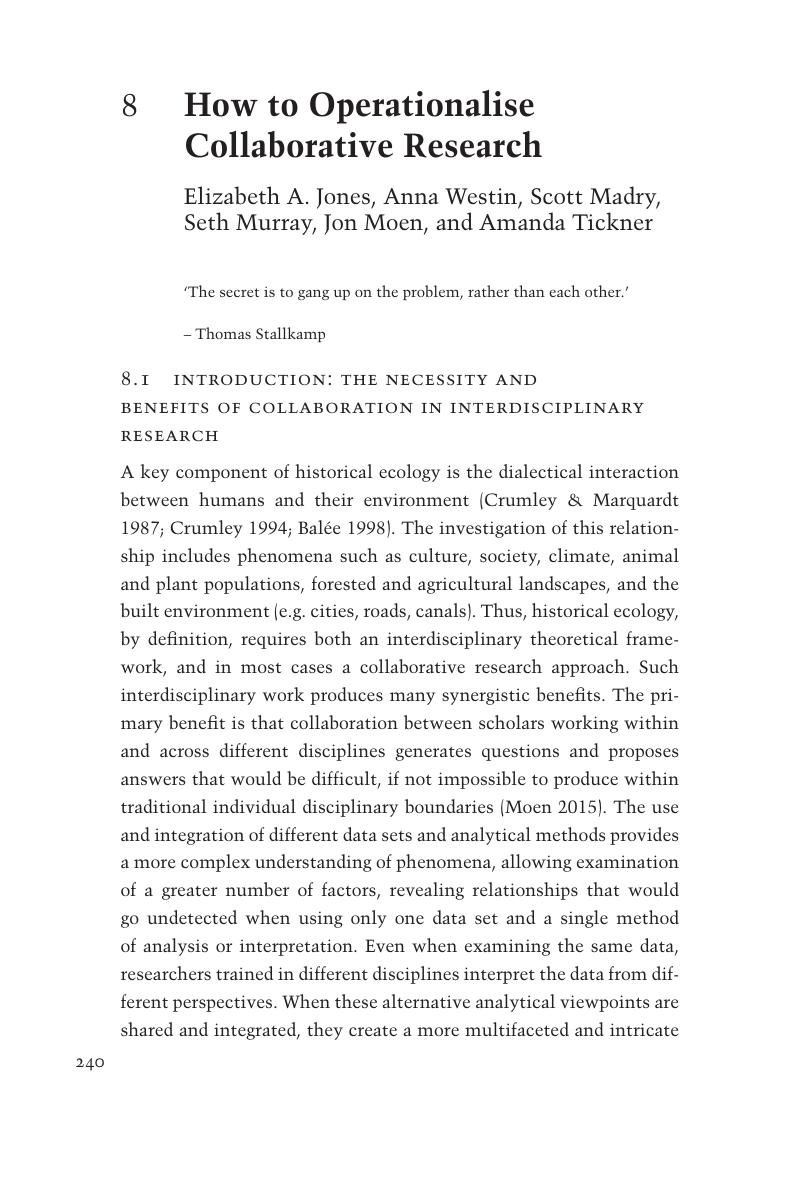Book contents
- Issues and Concepts in Historical Ecology
- Issues and Concepts in Historical Ecology
- Copyright page
- Contents
- Illustrations
- Contributors
- 1 Is There a Future for the Past?
- Part I Challenges: Time and Memory
- Part II Approaches: Concepts and Methods
- 6 Concepts for Integrated Research in Historical Ecology
- 7 Diversity in Ecological and Social Contexts
- 8 How to Operationalise Collaborative Research
- Part III Moving Forward
- Index
- References
8 - How to Operationalise Collaborative Research
from Part II - Approaches: Concepts and Methods
Published online by Cambridge University Press: 10 November 2017
- Issues and Concepts in Historical Ecology
- Issues and Concepts in Historical Ecology
- Copyright page
- Contents
- Illustrations
- Contributors
- 1 Is There a Future for the Past?
- Part I Challenges: Time and Memory
- Part II Approaches: Concepts and Methods
- 6 Concepts for Integrated Research in Historical Ecology
- 7 Diversity in Ecological and Social Contexts
- 8 How to Operationalise Collaborative Research
- Part III Moving Forward
- Index
- References
Summary

- Type
- Chapter
- Information
- Issues and Concepts in Historical EcologyThe Past and Future of Landscapes and Regions, pp. 240 - 272Publisher: Cambridge University PressPrint publication year: 2017



